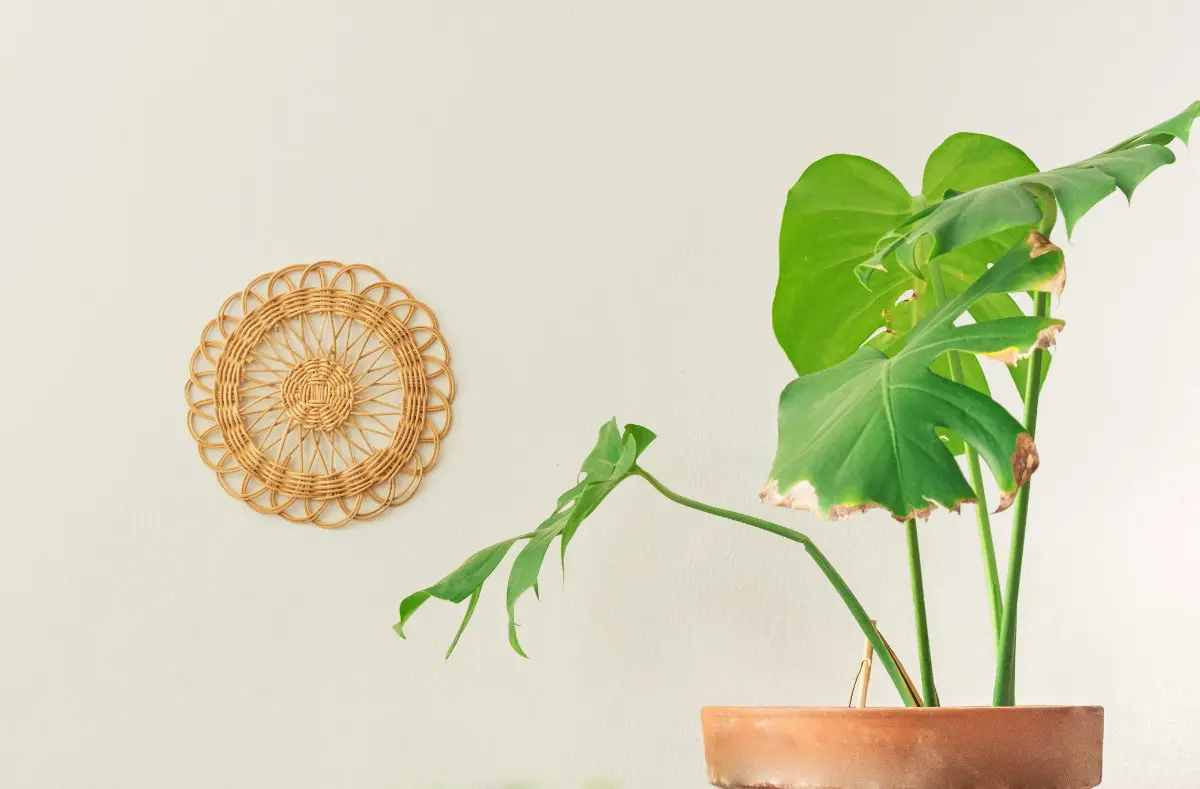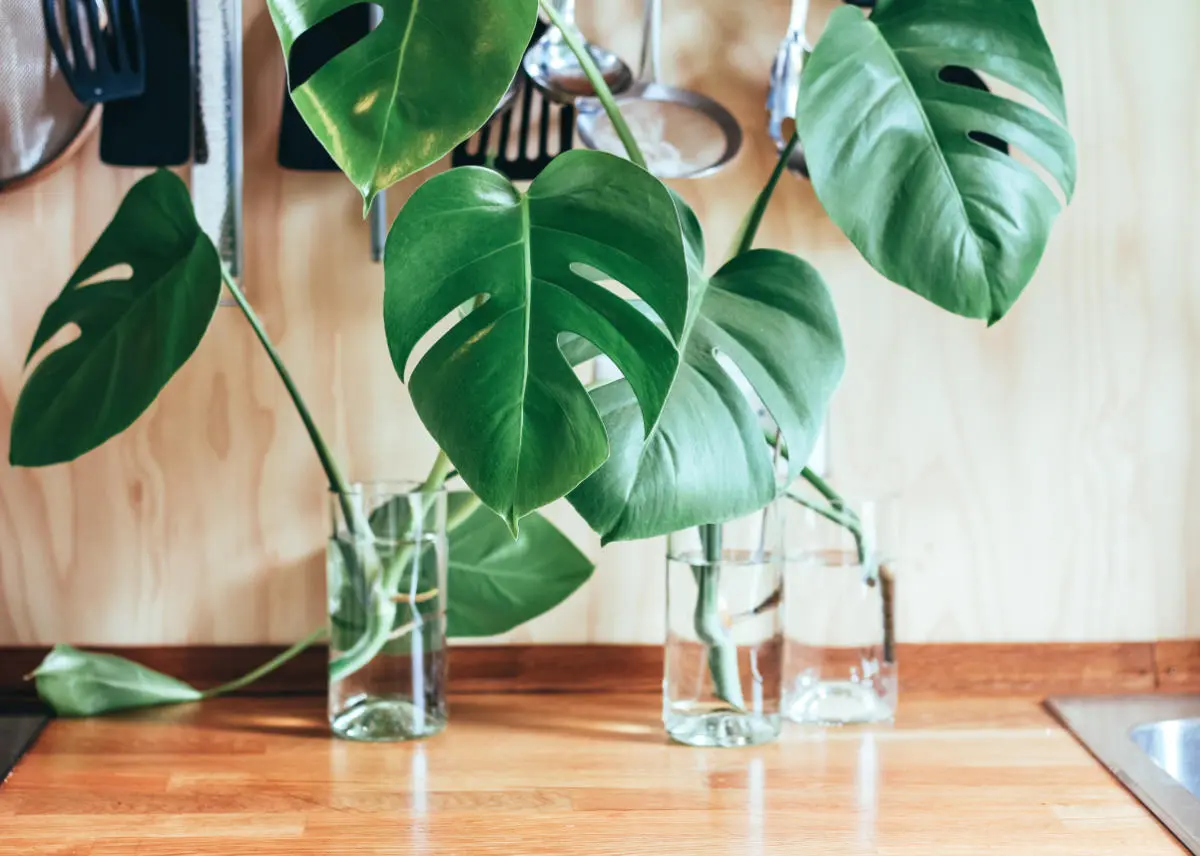Can Monstera Aerial Roots Be Planted and How to Do It
The aerial roots of a monstera plant can be planted to propagate new plants. Learn how to properly plant and care for monstera aerial roots to grow a healthy and thriving plant.
By Tobias Holm
Have you ever wondered if you can plant the aerial roots that dangle from your monstera plant? Many plant enthusiasts are curious about the potential of these roots for propagation and growth. In this blog post, we will explore the topic of whether monstera aerial roots can be planted and provide a step-by-step guide on how to do it successfully.
Understanding Aerial Roots in Monstera Plants
Monstera plants are adorned with distinctive aerial roots that protrude from the main stem, venturing into the surrounding air. These roots are not just ornamental but fulfill critical functions for the plant's well-being and survival. Primarily, they offer structural support to the monstera, allowing it to climb and secure itself onto nearby supports in its natural habitat. This climbing ability is key to the monstera's growth patterns, enabling it to reach toward light sources and thrive.
Besides providing physical support, aerial roots also play a vital role in the plant's ability to absorb moisture and nutrients directly from the air. This characteristic is particularly beneficial in their native tropical environments, where humidity levels are high, and nutrients can be sourced from the surrounding air and rainwater.
Interestingly, while these roots are integral to the monstera's adaptation and survival in the wild, they are not absolutely essential for the plant to live in a home environment. However, leveraging these roots for propagation purposes can offer a unique opportunity to expand your collection of these lush, tropical plants. Understanding the multifaceted roles of monstera aerial roots is the first step towards harnessing their potential for growth and propagation in your own home.
The Potential of Monstera Aerial Roots for Propagation
The aerial roots of a monstera plant harbor untapped potential for creating new life from an established one. These slender, air-reaching extensions are more than just structural aids for the plant; they are a bridge to multiplying the lush beauty of monsteras in your own space. Through propagation, these roots can transform into a vital source for developing new, thriving plants. This process not only enriches your collection but also presents a sustainable and rewarding approach to sharing and expanding the presence of these tropical wonders in indoor environments.
Embarking on this journey requires a keen understanding of the aerial roots’ capabilities. Unlike traditional soil-bound roots, these aerial counterparts are designed to grasp onto surfaces and absorb moisture and nutrients from the air, making them inherently versatile and resilient. When these roots are planted, they adapt by extending into the soil, laying down the foundation for new plant growth. This remarkable adaptability is what makes aerial root propagation a viable and exciting venture for monstera enthusiasts.
The journey from root to full plant is an exercise in patience and care, but the reward of watching a new monstera plant emerge from what was once just a hanging root is unparalleled. This method of propagation not only leverages the natural strengths of the monstera but also contributes to a sustainable cycle of growth and regeneration within your indoor garden.
Step-by-Step Guide to Planting Monstera Aerial Roots
Begin by identifying healthy aerial roots on your monstera plant that are suitable for propagation. Carefully cut these roots from the main plant using a clean, sharp pair of scissors or gardening shears, ensuring you leave a few inches of root to work with. It's crucial to make a clean cut to prevent damage to both the parent plant and the aerial root.
Next, prepare a pot with a mix of well-draining soil. A combination of potting soil, perlite, and peat moss is ideal for ensuring the right balance of moisture and aeration. This mix will support the aerial roots as they transition and adapt to their new environment.
Plant the aerial roots shallowly in the soil, covering them lightly but firmly enough to support the root in an upright position. The depth at which you plant the aerial roots should not exceed a few centimeters to avoid burying them too deeply, which could impede their growth.
Water the newly planted roots immediately after planting, ensuring the soil is moist but not waterlogged. This initial watering is critical for helping the roots establish themselves in their new home.
Finally, place the pot in a location that receives bright, indirect sunlight. This light condition mimics the monstera's natural habitat and encourages healthy growth. Monitor the soil moisture regularly, water as needed to maintain a consistent level of moisture while avoiding overwatering.
Common Mistakes to Avoid When Planting Aerial Roots
When venturing into the planting of monstera aerial roots, it's crucial to sidestep some pitfalls that can negatively impact their growth.
A prevalent error is planting these roots too deeply. They thrive near the surface, so burying them deep within the soil can suffocate them, stunting growth and potentially leading to decay. Equally detrimental is the practice of overwatering. While it might seem intuitive to provide plenty of water to help the roots establish, too much moisture can drown them, leading to root rot, a condition difficult to recover from.
Additionally, using the incorrect soil mix can hinder the aerial roots' adjustment and growth. A well-draining, airy mix is essential; a dense, clay-heavy soil can trap moisture and inhibit the roots from breathing, delaying their development. By carefully avoiding these common missteps, you create a conducive environment for your monstera's aerial roots to flourish, setting the stage for a new plant to emerge.
Caring for Your Newly Planted Monstera Roots
After successfully planting your monstera aerial roots, it’s crucial to maintain an environment that fosters their growth into robust plants. Initially, ensure the soil remains consistently moist but not waterlogged; overwatering can be as detrimental as neglect. Strike a balance by allowing the top inch of the soil to dry out before watering again. This mimics the natural humidity and dryness cycle they would experience in their native habitat.
Bright, indirect sunlight is paramount for your monstera's health. Too much direct sun can scorch the leaves, while too little light stunts growth. Find a spot in your home where the light is filtered, such as near a window with sheer curtains. This setup will replicate the dappled sunlight of a tropical forest canopy.
Fertilization plays a supportive role in the health of your monstera. During the growing seasons of spring and summer, apply a balanced, water-soluble fertilizer once a month to nourish your plant. However, in the fall and winter, when growth naturally slows, reduce fertilization to prevent overfeeding, which can harm the plant.
Remember, the key to a thriving monstera starts from the ground up. Paying attention to the unique needs of your newly planted aerial roots will lay the foundation for a spectacular and healthy monstera plant.
Frequently Asked Questions About Monstera Aerial Roots
Many enthusiasts have queries regarding the propagation and care of monstera aerial roots. A common question is whether these roots can be rooted in water.
While this method has worked for some, planting them in soil is often recommended for optimal growth and health. The timeline for an aerial root to transform into a new plant varies. Some may begin to show new growth in as little as a few weeks, while others might take several months, depending on care and environmental conditions.
Additionally, it's important to note that not all monsteras develop aerial roots. This trait is more prevalent in certain varieties as they reach maturity. Successfully cultivating monstera from aerial roots involves understanding their growth patterns and providing appropriate care tailored to their unique needs.
Summary
The potential to transform monstera aerial roots into flourishing new plants is an exciting venture for any plant enthusiast. This process taps into the innate resilience and adaptability of monstera plants, allowing you to expand your indoor garden with effort and patience. Key to this propagation method is the initial selection of healthy aerial roots, a careful cutting technique, and the preparation of an ideal soil mix that supports the root's transition into its new environment.
Planting these roots requires a strategic approach, ensuring they are not buried too deeply and are placed in conditions that mimic their natural tropical habitat—bright, indirect light, and a consistent moisture level in the soil. It's also critical to avoid common pitfalls such as overwatering and using dense, non-breathable soil, which could hinder the growth and health of your plant.
Caring for your newly planted monstera roots involves monitoring soil moisture, providing the right amount of light, and supporting their growth with appropriate fertilization during the active growing seasons. This careful attention will help your monstera roots thrive and eventually grow into robust plants that add a lush, tropical feel to your space.
Ultimately, with the right conditions and care, monstera aerial roots offer a sustainable and rewarding way to propagate and enjoy more of these magnificent plants. The success of this endeavor enriches your indoor gardening experience, bringing more greenery into your home and allowing you to share the beauty of monsteras with others.



